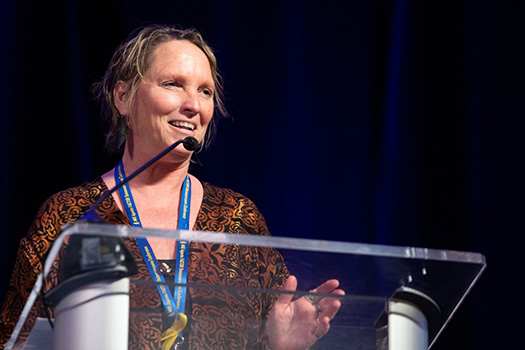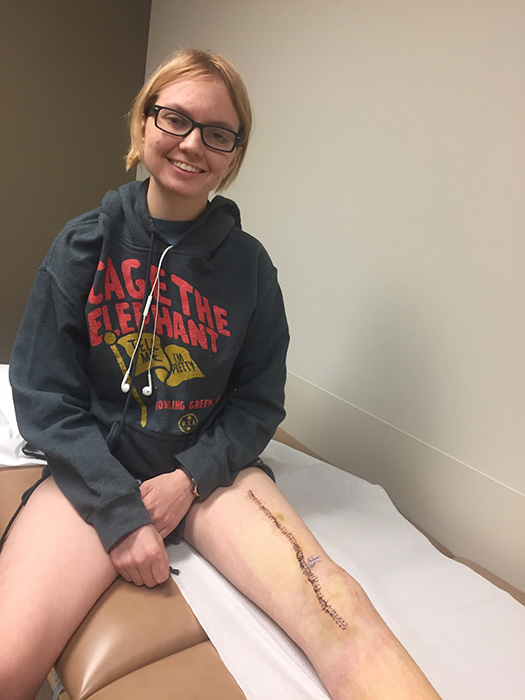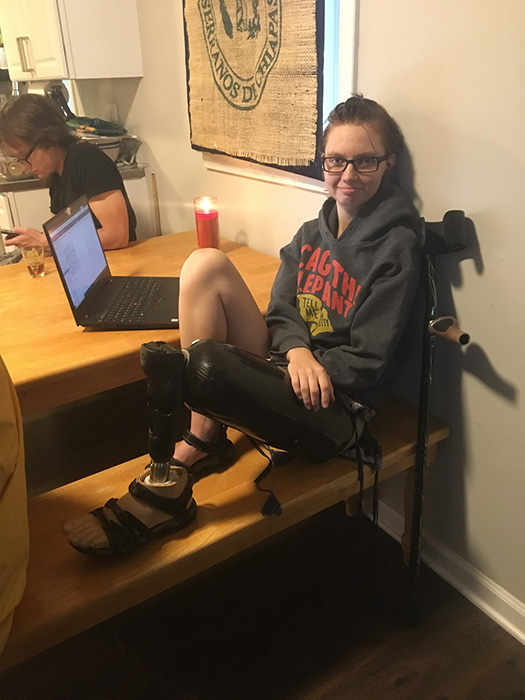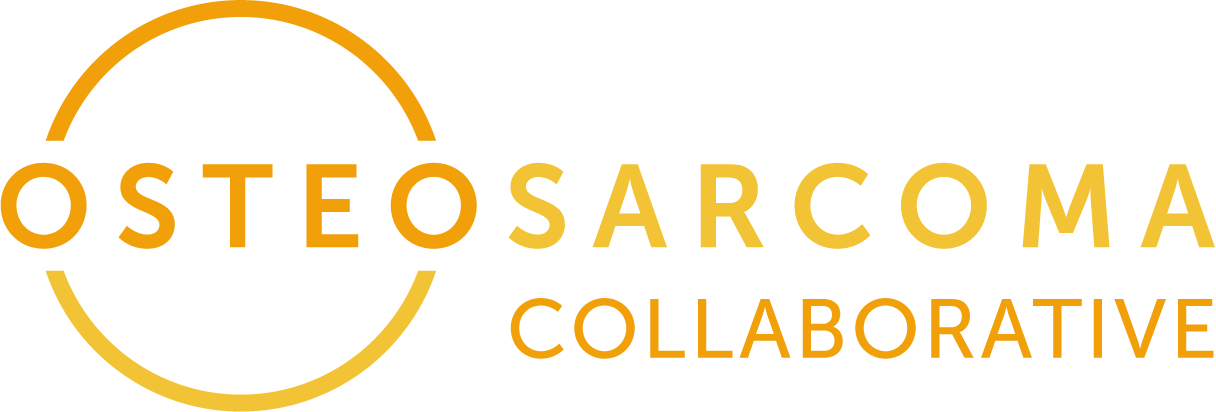This is an online decision aid to help you understand surgery options when a bone tumor, like osteosarcoma, is located near the knee joint.
The Osteosarcoma Decision Aid is designed to help you:
- Take an active role in making the decision
- Learn what life might look like with each option
- Understand that there are unknowns with each option
The location of the tumor, age of the patient, and stage of disease all affect the options. Not all options may be advised if survival is affected by the surgical decision.
A Letter from Dr. Janet Panoch

In 2013, I went back to school to get a PhD in Health Communication. I wanted to learn what I could do to help future families make difficult surgical decisions. Eventually, with the input of survivors, parents, and doctors, this online decision aid was created. It is called the Osteosarcoma Decision Aid, but it can also be used for other types of bone cancer around the knee.
A decision aid is designed to help you make a medical decision with your surgeon. This is called “shared decision making” in health care. It is shared because your surgeon is an expert in surgery, and you are the expert of you and what matters most to you. If you are a parent or caregiver, you are the expert of your child. I use the term “you” instead “you/your child” throughout the decision aid to make it easier to read.
There are four sections in the osteosarcoma decision aid, and I suggest you follow them in order:
Section 1: Making Your Decision
- Common questions
- Five steps to making the decision
- Making the decision for your child
- Three main options with pros, cons, and issues
- Personal stories and resources specific for each option
- Social Support to connect with other families
- PACE: How to talk to your surgeon
- Second opinions
- 20 questions to ask your surgeon
- Thinking long-term: What matters most to you? Questions and practice statements.
- Life with amputation and rotationplasty
- Life with limb salvage surgery
- Resources
You will see direct quotes highlighted in yellow from people who have been through this experience. It helps to hear personal stories of other people. It is also important to remember that everyone’s experience is unique. Your experience might be quite different.
Unfortunately, no one can really tell for sure which surgery is best. Imagining what life might look like down the road, and thinking about what matters most to you, is part of this decision aid.
The uncertainty about who will have later issues, like pain or limited mobility, makes the decision even harder. Understanding what those problems might be ahead of time will better prepare you to understand and manage those issues later.
This is a complex decision, so there is a lot of information, including links to medical sites. The medical information in the Know Your Options section has been reviewed by an orthopedic surgeon. I wanted the information to be in one place, so new families will not have to search on their own. If you start to feel overwhelmed, you can set it aside and come back again.
Making a surgical decision for bone cancer is hard but finding information should not have to be. I hope this decision aid helps you understand the options better so you can talk with your surgeon about what matters most to you.


Zoe is all grown up now and remains cancer-free. She had a limb salvage surgery for 11 years before choosing an above knee amputation at age 23. She now runs with a running blade and is very active in martial arts, like Krav Maga and Jiu Jitsu. Zoe has a master’s degree in Public Health and works as a professional in health policy.
The Osteosarcoma Decision Aid is informed by families like yours. Please let me know if you would like to contribute to the content of this decision aid - we welcome your input! If you need decision support or have questions about using this decision aid, feel free to contact me.
May you find hope for a fulfilling life with the decision you choose.
Warmly,



